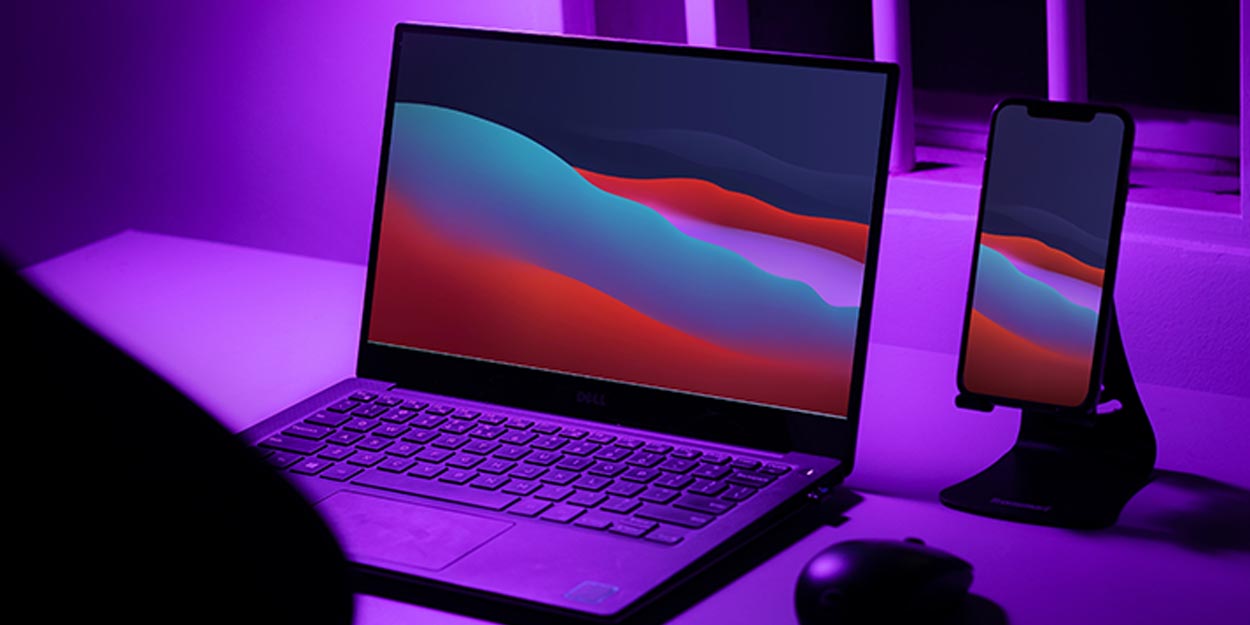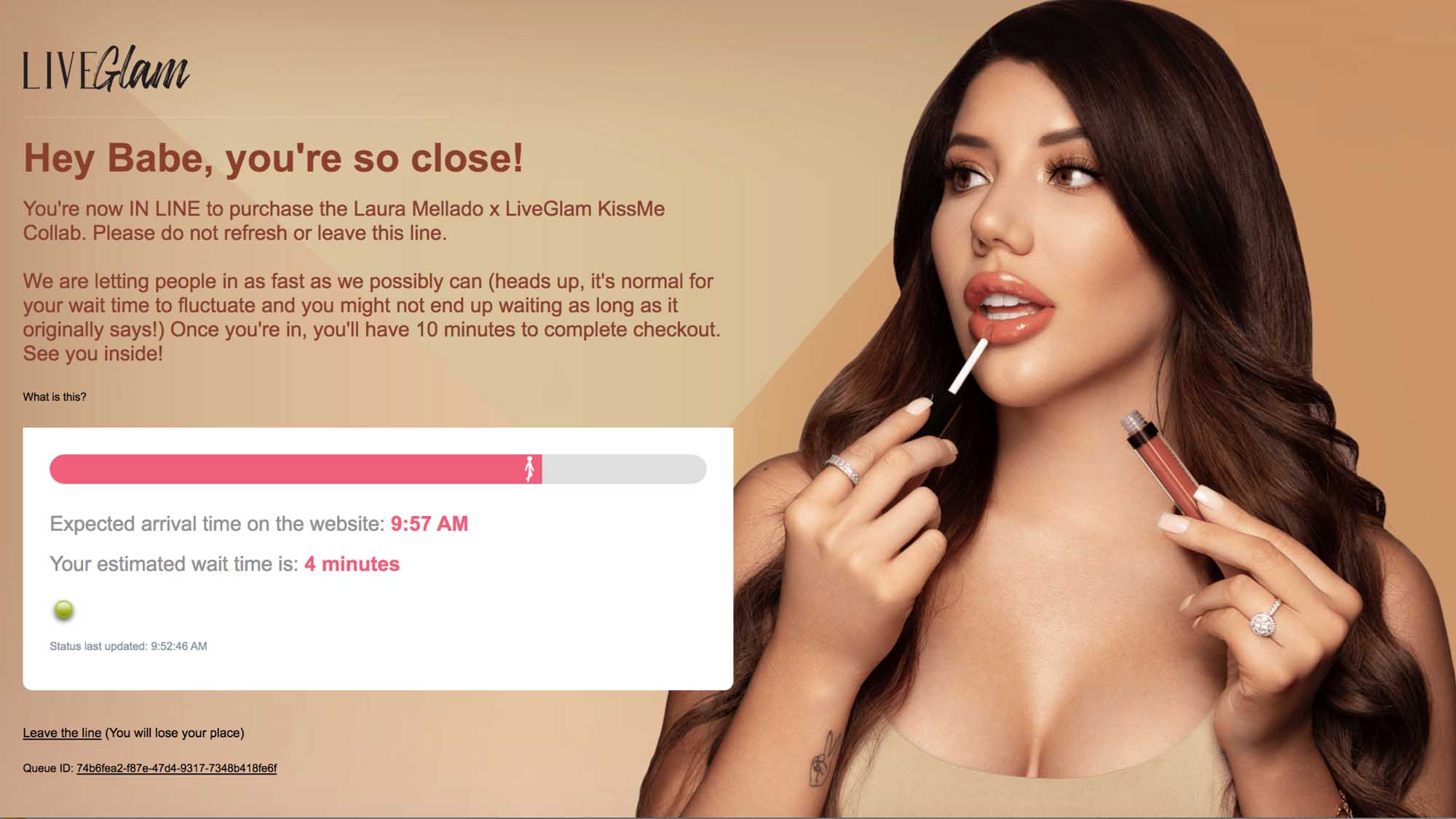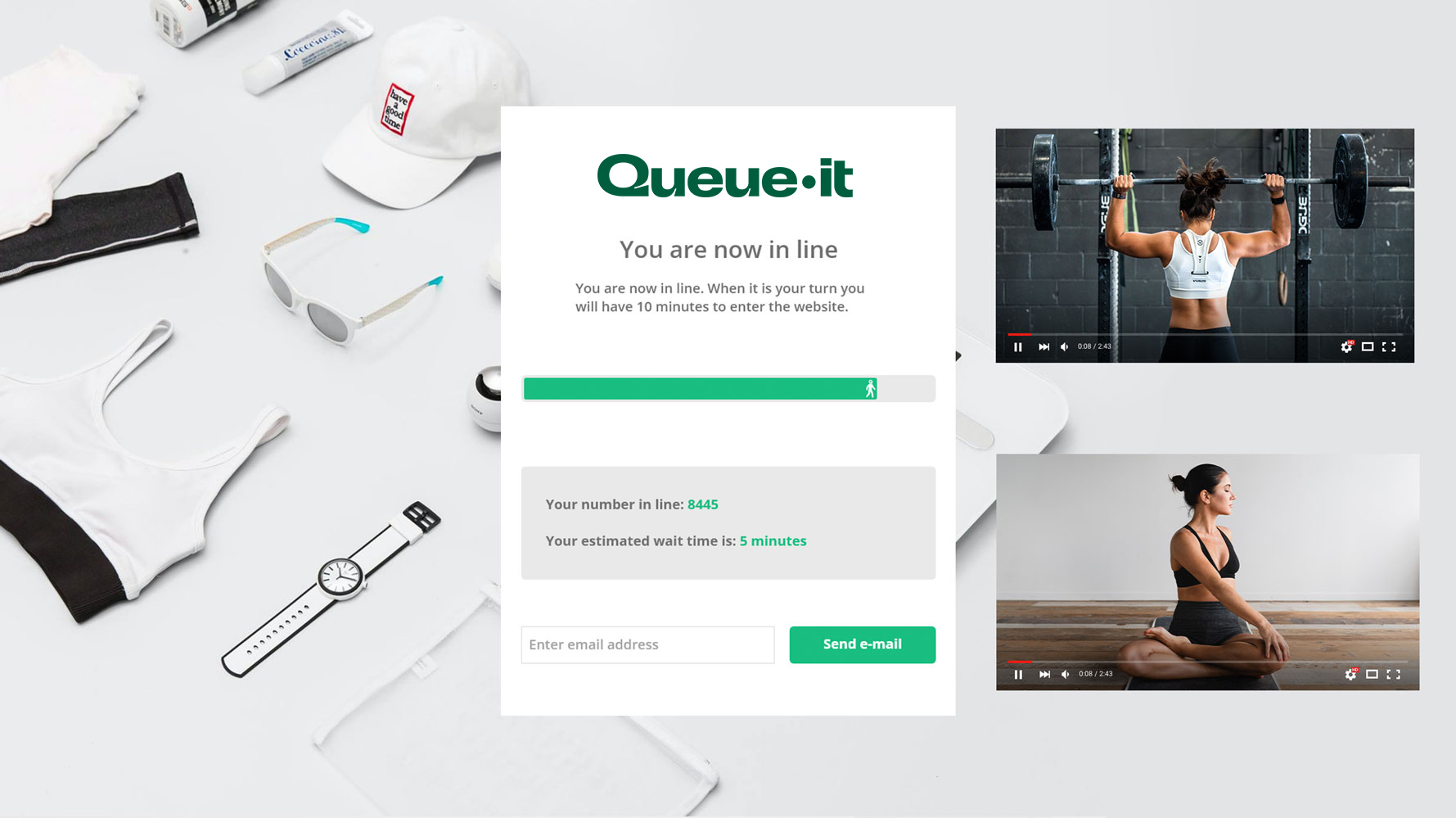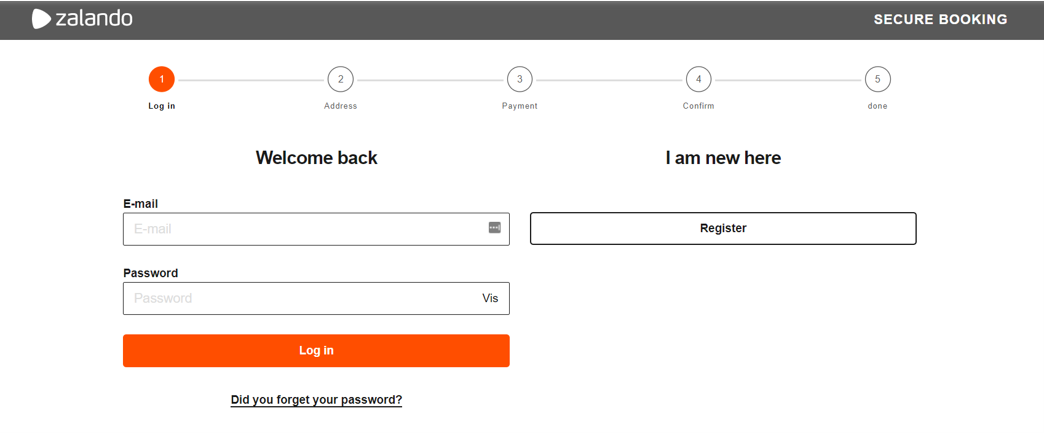How to improve your ecommerce UX with a virtual waiting room

Whether for online groceries, sneaker releases, or COVID-19 vaccine registrations, odds are you’ve seen a virtual waiting room in the past year. Discover the 7 clever UX benefits that explain why virtual waiting rooms have become an ecommerce UX trend in 2021.
The skeptical look.
If you’re an ecommerce or product manager who’s proposed putting your online shoppers in a waiting room, you might recognize it.
Placing online visitors in a line may not feel intuitive. “How will it impact our customer experience?” they may ask. “Will we lose sales?”
We get it.

But first: take a moment to congratulate yourselves.
If you’re looking into a virtual waiting room, it’s because your business is successful. So successful that your site is at risk of being overwhelmed. You’re driving high traffic to your site, and there is intense demand for your products.
Companies like yours use a virtual waiting room to avoid becoming victims of their own success.
Your colleagues might see online queuing as a step backwards—even as they wouldn’t disagree that lines in brick-and-mortar stores serve an essential and fair role in dealing with customer flow. As we also know from real life, there’s wide variety in the quality of customer experiences when waiting. Compare your wait at the post office to the dazzling, interactive experiences at a Disney theme park.
There are several reasons why top ecommerce and product managers are implementing waiting rooms across online retail. They know that, when done well, a virtual waiting room can actually boost the ecommerce user experience.
Let’s review how a virtual waiting room can empower you to deliver a fair user experience you can be proud of.
RELATED: How Virtual Waiting Rooms Make Queuing a Positive Experience
1. It prevents dreaded crashes & slowdowns
First, you need to understand one crucial point.
When retailers are using a virtual waiting room, often it’s because the alternative is a slow or crashed website. These are the two worst-case scenarios from an ecommerce website UX perspective.
The downtime statistics are sobering. 79% of those who experience poor ecommerce website performance will avoid shopping with you in the future. And lost orders can easily rise into the hundreds of thousands of dollars.
A virtual waiting room like Queue-it acts as a safety net for retailers, protecting 24/7 against sudden peaks in online visitors. The way virtual waiting rooms work, online shoppers don’t see the waiting room in normal circumstances.
When ecommerce websites have spare capacity, shoppers don’t even realize the virtual waiting room is in place. But when retailers send visitors to a waiting room, it’s evidence of traffic peaks that could otherwise overwhelm their sites.
So, a virtual waiting room frees your site to sell at its maximum capacity, without tipping over and damaging your user experience, your brand, and your bottom line.
Discover the virtual waiting room that’s right for you

2. It delivers online fairness
If traffic peaks aren’t a problem, retailers use virtual waiting rooms to accomplish online fairness.
This is common with limited-edition product launches, such as sneaker releases. There might be 10,000 sneakerheads going after 100 pairs of shoes.
All things equal, who should get access?
Virtual waiting rooms allow randomization of all earlycomers to a sale, just like a raffle. Anyone arriving after the start of the sale gets their place in line in a first-come, first-served order—the gold standard of fairness.
But be aware that not all virtual waiting rooms are able to offer a first-come, first-served wait. So, make sure to demand a virtual waiting room that helps you deliver the fair user experience you can be proud of.
RELATED: Keeping the Internet Fair: Queue-it's Commitment to Online Fairness
3. It helps set expectations & allows real-time communication
Picture yourself making a phone call and being put on hold.
Compare your stress level when 1) you’re told what number you are in queue to 2) you hear hold music on a loop.
Which is more stressful? Clearly number 2.
Academic studies show that a positive waiting experience is driven not by how long people wait but how people feel while waiting.
RELATED: The Psychology of Queuing Revealed in 6 Simple Rules
When people are put in line, they want to know why they’re waiting and how long they can expect to wait.
Some virtual waiting rooms give you the ability to show your visitors transparent wait information, like estimated wait time and position in line. Ecommerce and product managers know this information reduces anxiety among their customers.
You can also use the waiting room page itself to clearly explain the wait in your own brand voice, as well as send real-time messages to visitors in the waiting room, keeping them updated and informed.
This is where a virtual waiting room truly shines compared to a basic waiting page. A page that says “Sorry, we’re experiencing technical difficulties. Please try again later.” is unnerving and does nothing to follow the scientifically-proven principles underlying queuing user experiences.

4. It engages visitors
Everyone knows time flies by when you’re busy and slows down when you’re bored.
Virtual waiting rooms allow ecommerce and product managers to embed files, links, and videos about your products on the waiting room page. This psychological hack helps make the wait feel shorter.

What’s more, not only do these features help cross-sell other products or services, they also help visitors feel like they’ve started the buying process.
Finally, the simple yet elegant addition of a progress bar re-conceptualizes waiting as progress.

5. It supports a seamless online experience
When routing your online shoppers through a 3rd party tool, you want the digital experience to be as seamless as possible. Ideally, customers won’t notice they’re no longer on your website.
The best virtual waiting rooms let you tailor your waiting room so it’s branded, in your brand voice and with your creative.
What’s more, they allow a seamless ecommerce UX between devices. Some virtual waiting rooms allow email notifications for those waiting. So users can easily begin waiting on their mobile device and seamlessly switch to their desktop from the email, keeping their same spot in line.

6. It taps into social proof
Psychology tells us humans are very influenced by what others think and do. We look to what others do to guide our behavior.
Reflect on your own life experience. What’s the simplest shorthand for finding a high-quality restaurant? A line.
Imagine you walk by one restaurant with a long line of customers outside, and a second with no line outside and few customers inside. You’ll assume the first was better, right?. The presence of a line actually makes that restaurant more appealing.
In this “wisdom of the crowd” social proof, seeing others endorsing a product—in this case, evidenced by them standing in line—encourages people to join in.
Social proof as a psychological technique has been used in advertising for decades. In a particularly creative example, a copywriter for an exercise equipment infomercial changed the call-to-action from “Operators are standing by” to “If operators are busy, please call again.” A poorer customer experience—being met with a busy signal instead of an operator—became an asset in selling the product by eliciting the image of a queue of eager callers. The exercise set became one of the best-selling products in infomercial history.
A virtual waiting room helps generate hype by showing visitors how popular a product is. When visitors see how many others are in line, they know what they are waiting for is also valuable to others.
With social proof validating the value of your products, online shoppers are more likely to wait and buy.
7. It can boost sales by increasing conversion rates
When a waiting room is active, it’s true that 100% of visitors may not stick around until they can visit your site. On the face of it, this doesn’t sound like it bodes well for sales.
But know two things.
First remember the point of comparison: the likely alternative is a slowed or crashed website, where few if any customers can place orders.
Second, tapping into psychology encourages shoppers to continue waiting and to be sure to buy once they’re through the waiting room.
We’ve already seen how tactics like updated wait information, transparent messaging, and engaging waiting room pages help create a positive waiting experience. We’ve also learned how social proof entices shoppers to remain in queue.
Then there’s also the sunk cost bias, which describes the human tendency to stick with a behavior or endeavor if we’ve already invested time, money, or effort into it. In marketing, progress bars are known to trigger our sunk cost bias, which is why ecommerce sites clearly show the steps in the purchase path.

A virtual waiting room taps into the sunk cost bias by strengthening the resolve of the customers who remain in line. Those customers who do wait will be most driven to buy, raising your conversion rates and likely increasing your average order value, too.
That’s what Queue-it customer Winkelstraat.nl realized when their waiting room activated during their Black Friday sales.
Because there was a waiting room, we saw an enormous increase in conversion rates. . . People think, “Now that I’m on the site, I really need to buy something.”
Joost van der Veer, CEO, Winkelstraat.nl
Impressively, the increase in the conversion rate can more than offset the reduction in visitors reaching the site.
As a retail administrator writes on Queue-it’s G2Crowd review platform:
A side-effect that we realized was that conversion rate had increased at a level much higher than the reduction in visitors to site, increasing revenue - especially when one of the potential outcomes during peak is server overload.
Retail Administrator, review from G2Crowd
Increasing conversion rate is an important and cost-effective way to get more value from the visitors you already have, empowering you to grow your business even faster.
Summing up
If you’re a product or ecommerce manager, you know how devastating a slowdown or crash can be for the ecommerce website user experience you provide.
Expert product and ecommerce managers lean on a virtual waiting room to avoid becoming victims of their own success while delivering a digital shopping experience they can be proud of.
A virtual waiting room keeps their websites and apps from crashing, delivers online fairness, and provides a seamless online shopping experience where customers get transparent, real-time updates on their wait. And by tapping into social proof and increasing conversion rates, a virtual waiting room can actually help lift sales.
If you’re looking to improve your digital customer experience during periods of peak demand, consider joining the thousands of experienced product and ecommerce managers using a virtual waiting room.